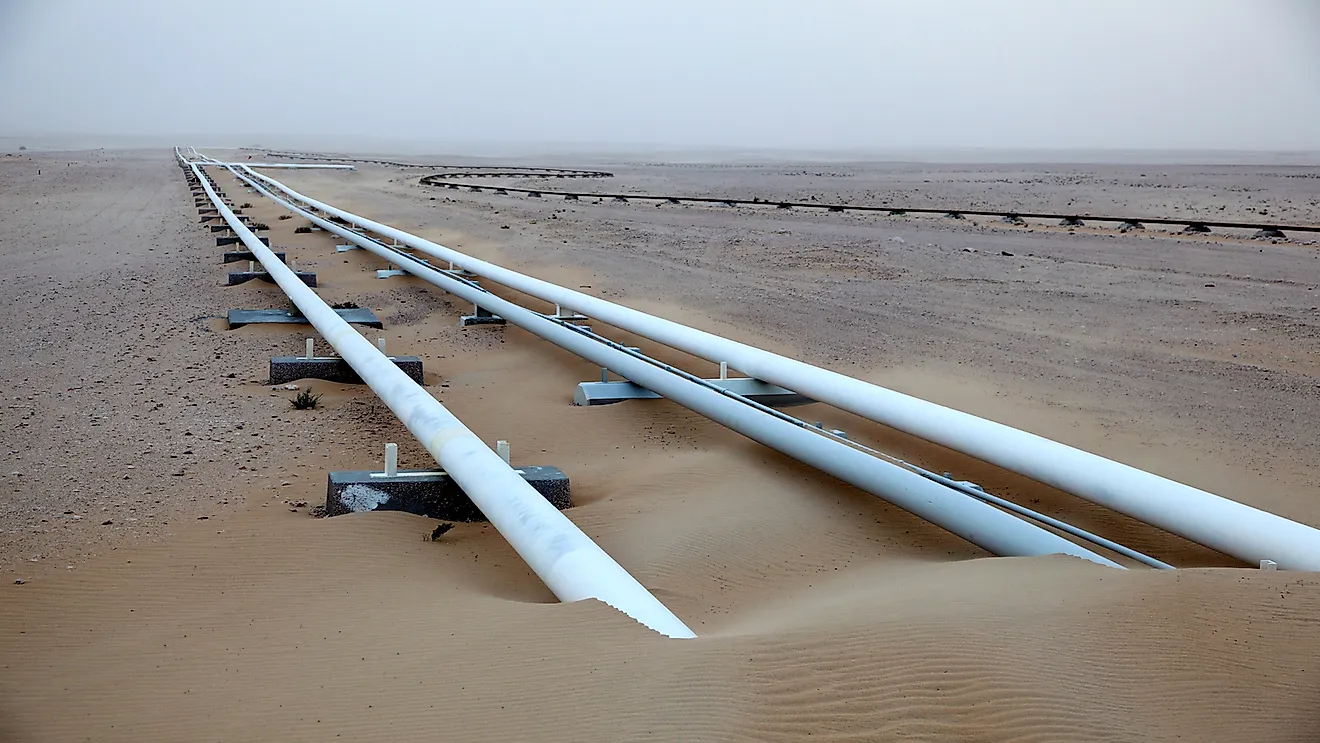What Are The Major Natural Resources Of Qatar?

Qatar is a Western Asian country occupying the Qatar Peninsula on the northeastern coast of the Arabian Peninsula. It is bordered to the south by the Gulf Cooperation Council of Saudi Arabia while the rest of the territory is surrounded by the Persian Gulf. Qatar is the 158th most extensive country in the world, covering an area of approximately 4,471 square miles. About 0.8% of the total area is covered by water while the rest is land. The country has a population of approximately 2.6 million residents with the expatriates forming the vast majority (2.3 million). Islam is the official and major religion in Qatar although it is not the only religion practiced in the country.
Brief Overview Of The Economy And Natural Resources Of Qatar
Qatar has one of the richest economies in the world. The country boasts of the highest per capita income in the world and is classified by the UN among countries with very high human development. Qatar is also considered one of the most advanced Arab states for human development. The country’s economy is mainly backed by the large reserves of oil and natural gas. Apart from that, fishing and pearl hunting are also important components of the economy. Qatar is also a major producer of helium. Here are the major natural resources of Qatar.
Oil
Oil and natural gas are the backbone of the economy of Qatar, contributing over 70% of the government revenue, more than 60% of the GDP, and about 80% of the export earnings. As of 2012, Qatar had approximately 15 billion barrels of oil reserves and gas fields, accounting for about 13% of the global resource. The exploration of oil in the country began in 1923 following a decrease in demand for Qatari pearls in the global market. Oil was first discovered in the late 1930s with deposits found in the Dukhan field. Since then, the country has engaged in oil exploration and claims to have 1.5% of the world’s oil reserves and produces 2% of the global oil economy. Qatar was the 17th largest crude oil producer in the world in 2015. It produced approximately 1.5 million barrels per day during this period. In 2013, it was the 11th highest producer with 1.3 million barrels per day. Oil production is expected to remain at its peak level of 0.5 million barrels per day until 2023. Qatar is one of the few oil producers that have little crude oil dependency on other countries. Although it does not import crude oil, it imports about 2,555 barrels per day of refined petroleum products. The major consumers of oil-based fuel in Qatar are the transportation and industrial sectors.
Natural Gas
Qatar is a major supplier of natural gas in the world. According to the “Oil and Gas Journal,” the natural gas reserve of Qatar is approximately 896 trillion cubic feet, meaning that the country contains approximately 14% of the world’s known natural gas reserve and the third-largest reserve behind Iran and Russia. The major natural gas reserve is located in the offshore North Field, which covers an area equivalent to the country itself. North Field is a geological extension of South Pars/North Dome Gas-Condensate field of Iran which contains approximately 450 trillion cubic feet of recoverable natural gas. Qatar is currently the largest exporter of liquefied natural gas in the world, surpassing Indonesia. In 2009, the country exported about 1.8 trillion cubic feet of LNG to India, Japan, South Korea, and the European market. In the same year, Qatar produced about 3.15 trillion cubic feet of natural gas, almost thrice the amount produced in 2000. Although there is an increase in domestic demand for natural gas, the bulk of the production is meant for LNG export. In 2016, Qatar Petroleum entered into an agreement with Dolphin Energy to increase natural gas export by 1 trillion cubic feet per day, mainly to the UAE. Qataris are also using natural gas to produce protein-rich feed for livestock, fish, and poultry. The country is expected to become a major food product exporter using cheap natural gas.
Fisheries
Before the emergence of the oil and gas industry, Qatar mainly depended on fishing and pearl diving. Qatar is almost surrounded by the Persian Gulf, making fishing a lucrative activity, especially along the coast. About 150 species of fish have been discovered off the country's coast, with tuna, grouper, and snapper being the most fished species. The northeast coast is the most popular fishing ground, characterized by large and heavy commercial fishing. The fisheries sector provides economic activity and employment to most of the coastal communities. Qatar’s per capita fish consumption in 2013 was 22.3 kilograms, above the world average of 20 kilograms. Total capture production has increased over the years to an average of 14,000 tons annually. The number of fishermen has also risen from 3,000 in 1995 to over 5,000 in 2017. Fishing methods used in Qatar include a large wire trap, locally known as “gargoor,” hook and line, and gillnet. Although Qatar has a well-controlled fishery, there is no existing legislation on the development of the fisheries management plan.
Other Resources
Qatar is one of the major producers of helium with large production plants of up to 20 million cubic meters per year. Currently, the country can produce 58 million cubic meters of helium per year. It is estimated that Qatar is now producing one-third of the current global demand for helium. Qatar does not have abundant mineral resources. Iron, aluminum, and steel are some of the mineral resources of the country.











